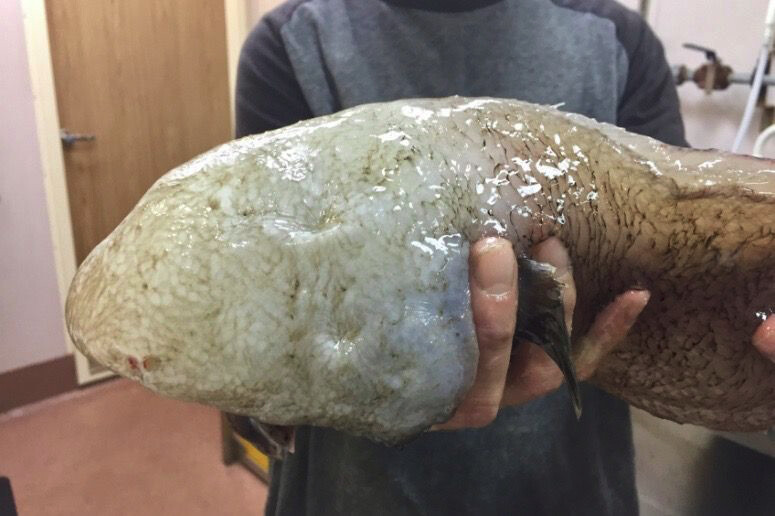(this has been greatly expanded since its first release not long ago)
“A long habit of not thinking a thing wrong, gives it a superficial appearance of being right, and raises at first a formidable outcry in defense of custom. But the tumult soon subsides. Time makes more converts than reason.”
From “Common Sense”, by Thomas Paine, 1776
NEW SPECIES ARE APPEARING, AND EXTINCT SPECIES ARE REAPPEARING
Great positive changes are underway at every level of our reality. They began in earnest in 2012, and have been increasing in speed and magnitude. I began writing this series of articles, entitled “Positive Changes That Are Occurring”, in July of 2013.
These historically-unprecedented positive changes are being driven by many hundreds of thousands, if not millions of simple, inexpensive Orgonite devices based on Wilhelm Reich’s work. Since Don Croft first fabricated tactical Orgonite in 2000, its widespread, ongoing and ever-increasing distribution has been unknitting and transforming the ancient Death energy matrix built and expanded by our dark masters, well, all the way back to Babylon, and before. And, as a result, the Ether is returning to its natural state of health and vitality.
One of those changes is that extinct species are reappearing, and new species are appearing for the first time as the Orgonite-driven improvement in the etheric environment reached a point where those life forms could manifest. Of course, this upends the Centuries-long confidence game that is mean-spirited Western materialism, which holds that “there is no such thing as the ether”.
The following forty-plus examples prove that the very existence of any organism is dependent upon a certain minimum level of health in the etheric environment.
The rigid, highly-repetitive propaganda language and techniques used in all of the accounts clearly demonstrates that there is, yes, wait for it, a Great Big Conspiracy to obscure this truth.
In May 2005, ecoseeds said “Grass species not seen since 1912 found on Catalina Island”.
Where the author has used the general “grass SPECIES” to obscure the actual name, to make the subject far less searchable.
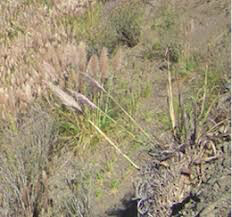
(California dissanthelium grass)
The article continues: “The plant, California dissanthelium, had long been thought extinct until a botanist recently spotted the wispy, 7-inch-tall tufts while hiking in Cottonwood Canyon.”
Where “seen” and “spotted” reinforce the false meme that the grass was there, all along, only no one looked for it with the required assiduousness for a very long while.
In January 2009, the U.K.’s Telegraph said “A butterfly that has not been seen in the wild in Britain since the Second World War is breeding again in the UK”.
Where “seen” reinforces the false meme that the butterfly was there, all along, only no one looked for it with the required assiduousness for a very long while.
Where the author has used the general “A butterfly” to obscure the actual name, to make the subject far less searchable.
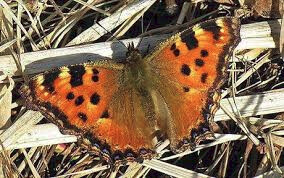
(Large Tortoiseshell Butterly, UK)
The article continues: “In Victorian times the Large Tortoiseshell was considered widespread and common in woodland in southern England.”
In May 2009, timeforkids.com said “cryptozoo-oscity: Rare animal found, not seen since 1990”.
Where “seen” reinforces the false meme that the butterfly was there, all along, only no one looked for it with the required assiduousness for a very long while.
And where the author has used the general “rare ANIMAL” to obscure the actual name, to make the subject far less searchable. As a bonus, the author also omitted the Philippines, the location of the discovery.

(Visayan Spotted Deer)
The article continues: “One of the world’s most elusive mammals has revealed itself. Footprints and scat belonging to the Visayan spotted deer have been found deep in the Philippines jungle.”
Where “spotted” reinforces the false meme that the dog-sized quadruped was there, all along, only no one looked for it with the required assiduousness for a very long while.
In September 2010, Discover Magazine widened its eyes to simulate honesty and lied “Search for Long-Lost Amphibians Finds Its First Three”.
Where “search” reinforces the false meme that the amphibians were there, all along, only no one looked for them with the required assiduousness for a very long while.
And where the author has used the general “long-lost AMPHIPIANS” to obscure the actual name, to make the subject far less searchable. As a bonus, they’ve also omitted “Africa” and “Mexico”, the locations of the finds.
They’re pretending that an amphibian-discovery mission had been planned by amphibian geniuses, when in fact they’re Satanically-inverting the truth that extinct species are reappearing in droves.
The author didn’t mention the specific names of any of the amphibians because they wanted to make the subject almost unsearchable. It’s a repeating propaganda tactic used in every single example in this chapter.
The propagandist from the Trusted Authority Figure “Discovery” continues: “Last week Conservation International reported that its scientists had rediscovered three species of amphibians, including a Mexican salamander not seen since 1941.”
Where they said “not SEEN since” to imply that it had been there all along, only no one had looked assiduously enough for it between now and then.
Where they said “Conservation International reported” to give the subconscious of the reader the green light to say, “oh, but that must have been reported incorrectly!” The propagandist knows that many or most readers will grasp virtually any straw to remain off the hook of personal responsibility.
“Including a Mexican SALAMANDER” is another hedging generalization, another refusal to mention the amphibian’s name.
The author continues: “In August, Conservation International launched its globe-spanning search for amphibians that haven’t been seen in decades, but still could exist. This month, they’ve tracked down their first three slippery specimens. Scientists turned up two long-lost African frogs and a salamander from Mexico.”
Where “searched for” and “tracked down” and “turned up” all reinforce the false meme that multiple amphibians were there, all along, only no one looked for them with the required assiduousness for a very long while.
The words “mystery”, “baffled” and “puzzled” are memes, used, among numerous similar variants, whenever anyone in the wholly-controlled-and-coopted Political, Academic, Scientific and Media establishments wants to lie about, well, basically anything. One of those variants is “jextraordinary”.That’s why the article goes on to say: “It’s pretty extraordinary to think about just how long it has been since these animals were last seen," observed project co-ordinator Robin Moore of Conservation International (CI). “The last time that the Mexican salamander was seen, Glenn Miller was one of the world’s biggest stars. The Omaniundu reed frog disappeared the year that Sony sold its first ever Walkman.”
He’s used the deceptive “seen” meme twice in succession, and then laid down the truth: that, from our perspective, the Omandiundu reed frog “disappeared” - winked out of existence - in 1979, due to the degradation of its etheric environment. And it was only in 2010 that the ether in the Congo returned to a state of health that would support the manifestation of this particular life form.
Stand, and witness the collapse of mean-spirited Western materialism.

(Mount Nimba Tree Frog)
Last seen in 1967, it lives in the Ivory Coast. A local scientist spotted it.
Where “spotted” reinforces the false meme that the gorgeous frog was there, all along, only no one looked for it with the required assiduousness for a very long while.
Omaniundu Reed Frog
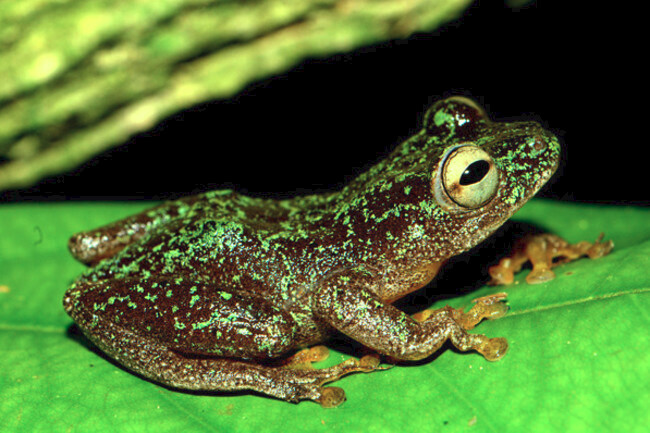
(Omaniundu Reed Frog)
The most recently seen of the three, Omaniundu was last noted in 1979. It lives in the Democratic Republic of the Congo.
Where “noted” reinforces the false meme that the stunning amphibian was there, all along, only no one took care to “note” it in a very long while.
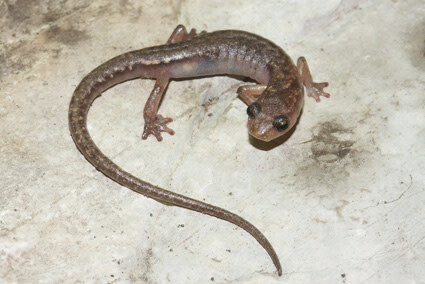
(Cave Splayfoot Salamander)
Cave Splayfoot Salamander. The salamander is native to Mexico’s Hidalgo region.
Remember we just talked about purportedly-extinct amphibians popping up all over the place, and the false claim that a single more-assiduous search had led to all the bounty? In November 2010, “Latest stories” said “Pictures: “Mr. Burns” Toad, More New Amphibians Found”.
Where “found” reinforces the false meme that yet another pile of amphibians were there, all along, only no one looked for them with the required assiduousness for a very long while.
And where “more” amphibians is general, as is “new” amphibians, as is “amphibians”. As is “Mr. Burns” toad.
The article continues: “A beaked amphibian said to resemble The Simpsons’ Mr. Burns and a poison dart frog are among new species discovered in Colombia.”
Where “discovered” reinforces the false meme that two more amphibians were there, all along, only no one ever looked for them with the required assiduousness, previously.
And, while “beaked” amphibian is more specific than “new” amphibian, it is still general. And, I’m sorry to break it to you, but “said to resemble Mr. Burns” is also, wait for it, general. Lastly, “poison dart” frog is also, sigh, general.
In a gambit identical to that seen in the previous amphibian hit-piece that I just finished exposing, here multiple “discoveries” are also crammed together in one article, to give it as small a footprint as possible, and make it as unsearchable as possible. The same technique is used tirelessly in fish records, and I exhaustively document it each time it is used. Please don’t make me bring examples over here into this article.
And they’re claiming it was one, single expedition or project that made the discovery, using more-assiduous, genius-level toad-searching. Versus the truth, that new species of toad are popping up all over the place, driven by the Orgonite-driven return to health of the Earth’s etheric environment, regardless of geography. Countless Orgonite devices based upon the work of Wilhelm Reich are unknitting and transforming the ancient Death energy matrix built and expanded by our about-to-be-former dark masters, well, all the way back to Babylon, and before. And as a result the ether is returning to its natural, ages long state of life and vitality.
On an even brighter note, our species is so ignorant and unlettered that I’ve collected and researched virtually the entire written history of these subjects, as my thirty-some bored-to-distraction subscribers can readily attest. Since the folks in charge use standard code memes to refer to things, it’s impossible to miss the trail, once you begin looking for their unvarying tracks. So the trial will be over as quickly as it has begun. Indeed, it is already over.
I’m sure you’ve noticed that we’re deep into it with the new Columbian amphibian hit-piece, and, by deliberate design, we still don’t know the creatures’ names.
The article continues: “The newly discovered species include a cryptic beaked toad (Rhinella species), which resembles dead leaves and whose offspring skip the tadpole stage to develop directly into toadlets; an unknown toad with bright red eyes; and a new rocket frog (Silverstoneia species), a type of poison dart frog.

(Cryptic beaked toad)

(New species of beaked toad, genus Rhinella, found in the rainforests of Chocó department of Colombia)
Wait, what? Multiple new species of beaked toads in Columbia, all there all along?

(New toad species with striking red eyes in the cloudforests of Chocó, Colombia.
The words “mystery”, “baffled” and “puzzled” are memes, used, among numerous similar variants, whenever anyone in the wholly-controlled-and-coopted Political, Academic, Scientific and Media establishments wants to lie about, well, basically anything. One of those variants is “unusual”. That’s why the author goes on to say “This highly unusual species has scientists baffled – we know nothing about this species other than where it lives.”
That’s because it just winked backed into existence where it lives, or, more remarkably, has never existed, and just winked into existence there for the first time. I don’t know what the answer is, however I’m guessing it’s the former, in that “there’s nothing new under the Sun.”In May 2017, National Geographic said “‘Extinct’ venomous snake rediscovered”.
Where the author has used the general “venomous SNAKE” to obscure the actual name, to make the subject far less searchable. As a bonus, they’ve also omitted “South Africa”, the location of the find.
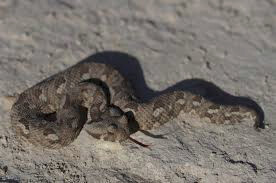
(Albany Adder, South Africa)
The words “mystery”, “baffled” and “puzzled” are memes, used, among numerous similar variants, whenever anyone in the wholly-controlled-and-coopted Political, Academic, Scientific and Media establishments wants to lie about, well, basically anything. One of those variants is “jumping up and down”. That’s why the article goes on to say: ““We were literally jumping up and down hugging,” scientist says of finding the extremely rare Albany adder in South Africa. The team found four live animals. Only 12 individuals have been recorded since the species was identified in 1937.”
The words “mystery”, “baffled” and “puzzled” are memes, used, among numerous similar variants, whenever anyone in the wholly-controlled-and-coopted Political, Academic, Scientific and Media establishments wants to lie about, well, basically anything. One of those variants is “spectacular”.
That’s why a Phys.org article from May 2011 is headlined “Spectacular mammal rediscovered after 113 years – first ever photographs taken”.
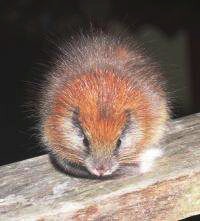
(Red-crested Tree Rat)
The author has used the general “spectacular MAMMAL” to obscure the actual name, to make the subject far less searchable. As a bonus, they’ve also omitted “Columbia”, the location of the “discovery”. In an amazingly brazen gambit, they’ve called the animal literally showing up at the door a “discovery”.
The words “mystery”, “baffled” and “puzzled” are memes, used, among numerous similar variants, whenever anyone in the wholly-controlled-and-coopted Political, Academic, Scientific and Media establishments wants to lie about, well, basically anything. One of those variants is “unique”.
That’s why the article goes on to say “A unique and mysterious guinea-pig-sized rodent, not seen since 1898 despite several organized searches, bizarrely showed up at the front door of an ecolodge at a nature reserve in Colombia, South America.”
Can you see how they’ve once again withheld the name of the creature? “Despite several organized searches” is obvious bullshit, because it’s general. The tree rat is there, and visible, in the trees, or it is not, just like squirrels here in the U.S.
The article continues: “The magnificent red-crested tree rat (Santamartamys rufodorsalis), stayed for almost two hours while two research volunteers took the first photos ever of a creature the world thought would never be seen again.”
Where “seen” reinforces the false meme that the rodent that was admitted to be “spectacular” was there, all along, only no one looked for it with the required assiduousness for a very long while.
In June 2011, “Global Trees Campaign” said “Rare tree not seen since 1955 re-discovered in Sabah, Malaysia”.
Wait, what? Rediscovered? What, are they walking around like Ents in the Lord of the Rings?
The author has used the general “rare TREE” to obscure the actual name, to make the subject far less searchable.
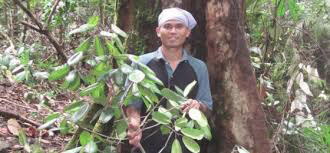
(Keruing Jarang Tree)
The article continues: “Three individuals of a rare dipterocarp species that was thought to be extinct from Sabah have been found in the Siangau Forest Reserve. Not seen since 1955, Dipterocarpus lamellatus, commonly known as Keruing Jarang, was found during a survey of the area by a research team from the Forestry Department.”
In July 2013, NBC Los Angeles said “ ‘Rare’ Jellyfish With 25-Foot Long Tentacles ‘Appears’ in California”.
The author has used the general “rare JELLYFISH” to obscure the actual name, to make the subject far less searchable.

(Black Jellyfish)
“Appears” is complex. One one level, it’s a Middle Ages, mouth-breather thing to say. Yet it may be the cold truth - that species are reappearing in our environment as the Ether continues to improve in health to a level where their lives can be sustained. Even to the point of “winking back into existence”, from our perspective. The mechanics of life in this dimension and others not being precisely as we’ve been told. But that’s just speculation.
The article continues: “Several swimmers at a Southern California beach were stung by the ‘rare’ Black Jellyfish, a marine animal who’s tentacles can grow up to 30 feet long. … A breed not seen since 1920 reemerges and ‘scientists’ link it to ‘global warming’ ‘?’
Where the general “scientists” is proof that no scientists were, in fact consulted for the article. Otherwise they’d have been quoted and named, according to strict journalistic rules. It’s just made up bluster from the generational Satanist propagandist at NBC Los Angeles. Not everyone at NBC Los Angeles is a generational Satanist, but all of them that write articles that get to the newswire.
We’ve also learned that ‘rare’ was used as a hedge a second time in the headline, in that something that shows up once every hundred years is beyond merely ‘rare’.
The fact that there’s a question mark behind the “global warming” plausible-deniability excuse is that the propaganda is well past its sell-by date, and is now back to trial-balloon status.
In November 2013, the U.K.’s Daily Mail wrote of “The Cookii ‘monster’: Huge ‘deadly’ pink jellyfish has been ‘discovered’ “
The author has used the general “Cookii MONSTER” to obscure the actual name, to make the subject far less searchable. As a bonus, the author also omitted “Australia”, the location of the discovery, to further “compartmentalize” the phenomenon.

(Crambione Cookii Jellyfish, Australia)
The article continues: “A jellyfish with a powerfully toxic sting has been rediscovered more than 100 years after the last recorded sighting of it. The ‘incredibly rare’ Crambione Cookii has not been seen since 1910 but has been recently ‘spotted’ off the coast of Queensland, Australia, where it was captured.”
“Spotted” reinforces the false meme that the fantastic jellyfish was there, all along, only no one looked for it with the required assiduousness for a very long while.
The servants of Death did what they could by immediately capturing and killing the creature, and the Mouthpiece of the State dubbed the jellyfish had been “spotted” and then “captured”. They falsely call it a “discovery” in the headline, then walk that back to “rediscovered”. They shook the “discovery” doll to distract you from the fact that it apparently winked back into existence.
Where the lurid-but-accurate “Incredibly rare”, is still a hedge back from “previously thought extinct”.
In January 2014, mongabay.com said “Not seen in over 130 years, ‘extinct’ frog rediscovered in Sri Lanka”.
Where “extinct FROG” is general, to obscure the actual name, to make the subject far less searchable.
“Not SEEN” reinforces the false meme that the gorgeous frog was there, all along, only no one looked for it with the required assiduousness for numerous lifetimes.
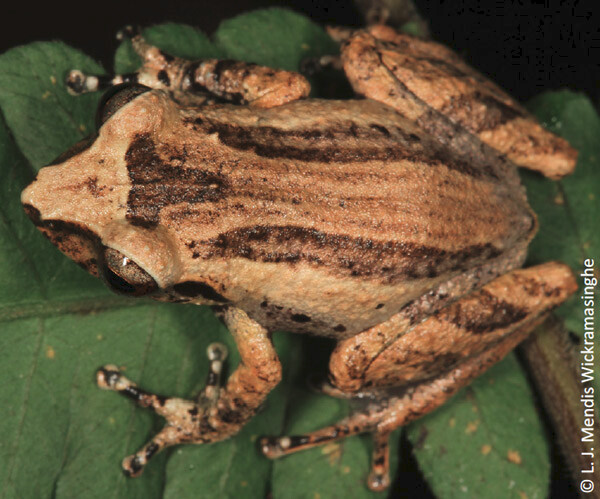
(Webless shrub frog (Pseudophilautus hypomelas), Sri Lanka)
The article continues: “In 1876—the same year that the first telephone call was made—the British scientist Albert Günther described a new species of frog from Sri Lanka, but the species, known as the webless shrub frog (Pseudophilautus hypomelas), was never seen again.”
The author doesn’t offer any suggestion as to why the frog suddenly “reappeared”, and also doesn’t mention that the reappearance is part of a larger, wider trend of frog, er, “rediscoveries”. When the truth is that it “winked back into existence”, from our perspective, as the Orgonite-driven improvement in the etheric environment in the Sri Lanka reached a point where that life form could manifest there. Of course this upends the Centuries-long confidence game that is mean-spirited Western materialism, which holds that “there is no such thing as the ether”.
The very existence of any organism is dependent upon a certain minimum level of health in the etheric environment.
In August 2014, the U.K.’s Independent said “ ‘Rare’ Jellyfish Spotted ‘For First Time In 70 Years’”.
The author has used the general “rare JELLYFISH” to obscure the actual name, to make the subject far less searchable. As a bonus, the author also omitted “Italy”, the location of the discovery, to further “compartmentalize” the phenomenon.
“Spotted” reinforces the false meme that the fantastic jellyfish was there, all along, only no one looked for it with the required assiduousness for a very long while.

(Drymonema dalmatinum jellyfish, Italy)
Where “rare”, while accurate, is still a hedge back from “previously thought extinct”. Something that shows up once every seventy years is beyond merely ‘rare’. It’s used as a hedge a second time as an excuse to not mention the actual name of the Jellyfish, which makes the subject much less searchable, and also increases the chance of you not going on to read the article. The propagandist knows that sixty to seventy percent of readers only read the headlines, so this tactic “compartmentalizes” the data with an effectiveness shown by the spectacular, conditioned ignorance of the majority of the populace.
The article continues: “Divers have spotted a species of jellyfish which hasn’t been seen since 1945! The Drymonema dalmatinum, also known as The Big Pink, was spotted last week of the coast of Italy. This gorgeous jellyfish was first discovered in the 1880s by a German naturalist, but then it was not seen again since the 1940’s.”
Two uses of “spotted” and another of “seen” hammer home the false meme that the fantastic jellyfish was there, all along, only no one looked for it with the required assiduousness for a very long while.
The article doesn’t suggest what led to the rare sighting, and continues to compartmentalize the phenomenon I’m documenting here by making no mention of other recent sightings of jellyfish previously thought extinct in other geographic locations.
In March 2015, in a strikingly honest description, “Seeker” said “ ‘Extinct’ Bird Not Seen Since 1941 Suddenly Reappears”.
Where “extinct BIRD” is general. In journalistic parlance, the name of the creature has been “buried” below. Since sixty to seventy percent of readers only read the headlines, this “compartmentalizes” the phenomenon with some effectiveness, and makes it far less searchable.
The headline also omits any mention of where the amazing event took place. That would be Myanmar. It’s another example of the propaganda technique known as “compartmentalization”.
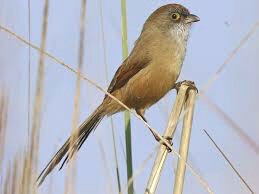
(Jerdon’s Babbler, Myanmar)
And where “not SEEN since” reinforces the false meme that the lovely creatures were there, flying about, all along, only no one looked up for them with the required assiduousness previously over most of the previous century, and the first fifteen years of this one.
The article continues: “A Jerdon’s babbler has been spotted in Myanmar for the first time in nearly a quarter century.”
Wait, what? “Nearly a quarter century” is general, and means “less than 25, but close to it.” The headline clearly states “since 1941”. It hadn’t been documented in 74 years, which is closing in on “nearly a century”. It’s a huge hedge.
The author doesn’t offer any suggestion as to why the bird suddenly “reappeared”, and also doesn’t mention that the reappearance is part of a larger, wider trend.
The false meme “spotted” is once again used to obscure the truth, that the bird “winked back into existence”, from our perspective, as the Orgonite-driven improvement in the etheric environment in the Myanmar reached a point where that life form could manifest there. Of course this upends the Centuries-long confidence game that is mean-spirited Western materialism, which holds that “there is no such thing as the ether”.
In April 2015, the U.K.’s Express aid “Rare animals not seen in Britain for centuries make a comeback”.
Where “rare ANIMALS” is general. In journalistic parlance, the name of the creature has been “buried” below. Since sixty to seventy percent of readers only read the headlines, this “compartmentalizes” the phenomenon with some effectiveness, and makes it far less searchable.
And where “in Britain” is also general, to obscure the specific (and searchable) location of the find, the river Otter in Devon, England.
And where “not SEEN” reinforces the false meme that the cat-sized, not-particularly-elusive creatures were there, all along, only no one looked for them with the required assiduousness previously in the densely-populated country over hundreds of years.
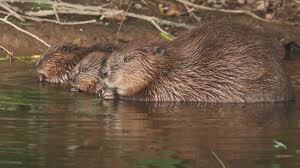
(Beavers, River Otter, England, 2015)
Calling animals not documented for centuries as “rare” is a hedge.
The article continues: “Last year the first wild beavers to be discovered in England for 500 years were found living on the banks of the river Otter in Devon. Another population has also established itself on the river Tay near Dundee, more than four centuries since beavers were hunted to extinction in the British Isles for their fur.”
Where the ruse “every last one was killed off by fur hunters” covers the truth that the degradation of the etheric environment in England was such that the beaver could no longer manifest there.
Where did this group of wild beavers come from? The ruse is played that they were there all along, for hundreds of years, only no one noticed them. There is, indeed, a sucker born every minute.
If they had been repatriated, it would be known, and noted in the article. When viewed within the context of many other examples from all sorts of species, the confidence game becomes apparent.
In addition to toppling mean-spirited Western materialism, this new knowledge also destroys the false sub-Orthodoxy of Darwinism.
The words “mystery”, “baffled” and “puzzled” are memes, used, among numerous similar variants, whenever anyone in the wholly-controlled-and-coopted Political, Academic, Scientific and Media establishments wants to lie about, well, basically anything. One of those variants is “gobsmacked”.
That’s why a Daily Mail article from the U.K. from February 2016 is headlined: “I’m not dead! Cranefly declared extinct 50 years ago is rediscovered after landing on the hand of a gobsmacked biologist”.
Where “Cranefly” is general. In journalistic parlance, the name of the creature has been “buried” below. Since sixty to seventy percent of readers only read the headlines, this “compartmentalizes” the phenomenon with some effectiveness, and makes it far less searchable.
And where the author deliberately obscures the location of the find (the British Territory of St. Helena Island in the South Atlantic).
And where “rediscovered” bravely supports the false meme that the gigantic insect was there, all along, only no one looked for it with the proper assiduousness over many decades.
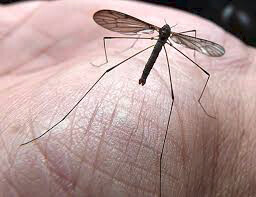
(Basilewski’s Cranefly, St. Helena Island, South Atlantic)
The article continues: “The Basilewsky’s cranefly was thought to be among many extinct species.”
Where “among many extinct species” shakes the doll that the environment is doing terribly, when the truth is precisely the opposite: that the gigantic cranefly “winked back into existence”, from our perspective, as the Orgonite-driven improvement in the etheric environment in the South Atlantic reached a point where that life form could manifest there. Of course this upends the Centuries-long confidence game that is mean-spirited Western materialism.
In June 2016, BirdLife truthfully stated “Spix’s Macaw reappears in Brazil”.
Strikingly, it’s one of only three articles in this chapter that actually prints the name of the bird.
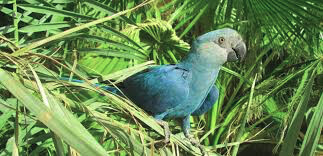
(Spix’s Macaw, Brazil)
The article continues: “But the baton was passed to his 16 year old grand-daughter, Damilys, who not only saw the macaw, not seen in the wild since 2000, but also managed to film it with her mobile phone.”
Where “saw” and “seen” reinforces the false meme that the bright-blue, cat-sized creature flying about was there, all along, only no one looked for it with the required assiduousness previously over the past two decades.
The words “mystery”, “baffled” and “puzzled” are memes, used, among numerous similar variants, whenever anyone in the wholly-controlled-and-coopted Political, Academic, Scientific and Media establishments wants to lie about, well, basically anything. That’s why a begadistrictnews.com article from October 2016 is headlined “Sightings of unusual jellyfish in the NSW Great Lakes”.
Where “Jellyfish” is general. In journalistic parlance, the name of the creature has been “buried” below. Since sixty to seventy percent of readers only read the headlines, this “compartmentalizes” the phenomenon with some effectiveness, and makes it far less searchable.
And where “in NSW Great Lakes” is also general, to obscure the specific (and searchable) location of the find, Australia.
And where “sightings” reinforces the false meme that the spectacular, slow-moving creature was there, all along, only no one looked for it with the required assiduousness previously, in all history.

(Desmonema scoresbyanna jellyfish, Australia)
The words “mystery”, “baffled” and “puzzled” are memes, used, among numerous similar variants, whenever anyone in the wholly-controlled-and-coopted Political, Academic, Scientific and Media establishments wants to lie about, well, basically anything. Two of those variants are “unexpected” and “excited”. That’s why the article goes on to say “What’s believed to be the first photograph of a live Desmonema scoresbyanna jellyfish in Australian waters was taken off Tuncurry’s breakwall by Forster’s Vicki Stewart. It was an unexpectedly rare sighting, unknowingly captured by Forster’s Vicki Stewart near Tuncurry’s breakwall earlier this month, which got marine experts excited.”
Where “first PHOTOGRAPH” implies that it’s been seen in the lakes previously, although no data is provided to support that false assertion.
The article continues: “In fact, the scientifically relevant finding of a rare Desmonema jellyfish in Australian waters – Forster’s waters, no less – gives proof to the old adage ‘if in doubt, ask’.”
Where the first-ever documentation of this jellyfish in these waters is flatly described as merely “relevant”. “If in doubt, ask” firmly implies that the jellyfish were there all along, only no one took care to look with the proper assiduous, previously.
Where the demonstrably beyond rare sighting (it’s a unique sighting) is hedged back to being rare.The article continues: “Now thanks to Vicki’s photograph of the lone jelly fish taken on October 7, Vicki has unknowingly provided marine experts with their first live image of a Desmonema in Australian waters - a rare sighting apparently.”
Where the demonstrably beyond rare sighting (it’s a unique sighting) is hedged back yet again, from rare to being only-apparently rare.
And where “Sighting” once again reinforces the Big Lie that that the spectacular jellyfish has not just “winked back into existence”, from our perspective, as the Orgonite-driven improvement in the etheric environment in Iowa reached a point where that life form could manifest there. Of course this upends the Centuries-long confidence game that is mean-spirited Western materialism.
In December 2016, gooniwindiargus.com.au said “Endangered species not seen since 1981 discovered on travelling stock route”.
Where “endangered SPECIES” is general. In journalistic parlance, the name of the creature has been “buried” below. Since sixty to seventy percent of readers only read the headlines, this “compartmentalizes” the phenomenon with some effectiveness, and makes it far less searchable.
And where “on traveling stock route” is also general, to obscure the specific (and searchable) location of the find, Australia.
And where “not SEEN since” reinforces reinforces the false meme that the friendly, dog-sized creature was there, all along, only no one looked for it with the required assiduousness for a very long while.
(Black-striped Wallaby, Australia)
The article continues: “Threatened species have been discovered on Travelling Stock Routes (TSR) in north-west NSW including a rare black-striped wallaby not previously seen since 1981.”
Where “not SEEN since” once again reinforces the Big Lie that that the black-striped wallaby has not just “winked back into existence”, from our perspective, as the etheric environment in Iowa once again improved to a level where that life form could manifest there. Of course this upends the Centuries-long confidence game that is mean-spirited Western materialism.
In February 2017, the U.K.’s Independent said “Frog not seen in decades discovered in Africa”.
Where “FROG” is general. In journalistic parlance, the name of the creature has been “buried” below. Since sixty to seventy percent of readers only read the headlines, this “compartmentalizes” the phenomenon with some effectiveness, and makes it far less searchable.
And where “In AFRICA” is also general, to obscure the specific (and searchable) location of the find, Zimbabwe.
And where “not SEEN in decades” reinforces the false meme that the bright, gem-like creature was there, all along, only no one looked for it with the required assiduousness for a very long while.
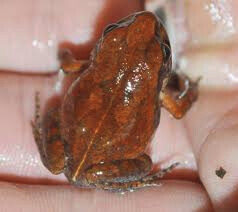
(Artholeptis troglodytes)
The article continues: “Researchers track down four ‘cave squeakers’, a breed first spotted in 1962 but not seen since.”
Where they’ve once again avoided using the proper name for the frog. To make it as unsearchable as possible, the author has “buried” it in the caption of the photograph: “In this Dec. 3, 2016, photo, a man holds a rare frog that hasn’t been seen in decades, the Artholeptis troglodytes, in Bulawayo, Zimbabwe.”
“TRACK DOWN” and “SPOTTED” repeat the Big Lie that the species had not just winked back into existence, from our perspective, as the etheric environment in Zimbabwe improved back to a level not seen in almost sixty years - the level of etheric health at which the frog can manifest.
In February 2017, kcrg.com said “Trail Camera In Iowa Spots Mammal Not Seen Since 1800s”.
Where “MAMMAL” is general. In journalistic parlance, the name of the creature has been “buried” in the body text below. Since sixty to seventy percent of readers only read the headlines, this “compartmentalizes” the phenomenon with some effectiveness, and makes it far less searchable. As a bonus, the author has used the false guise of familiarity to also omit the name of the state, Iowa, for the same reason.
And where “spots” and “not SEEN since” both hammer home the false meme that the terrier-sized creature was there, all along, only no one looked for it with the required assiduousness for a very long while.
(Fisher, Cochise County, Iowa)
It’s a meme used in every single example in this chapter.
The article continues: “A small and furry yet fierce mammal called a fisher has been spotted in Iowa for the first time in roughly 150 years.
Where “spotted” once again reinforces the Big Lie that the fisher has not just “winked back into existence”, from our perspective, as the etheric environment in Iowa once again improved to a level where that life form could manifest there. Of course this upends the Centuries-long confidence game that is mean-spirited Western materialism.
In March 2017, Tuscon.com said “A new never-before seen jaguar photographed in the mountains of Cochise county”.
Where “new JAGUAR” is general. In journalistic parlance, the name of the jaguar has been “buried” in the body text. Since sixty to seventy percent of readers only read the headlines, this “compartmentalizes” the phenomenon with some effectiveness, and makes it far less searchable. As a bonus, the author has used the false guise of familiarity to also omit the name of the state, Arizona, for the same reason.
The word “seen” hammers home the false meme that the fantastic cat was there, all along, for all history, only no one had ever looked for it with the required assiduousness prior to now.
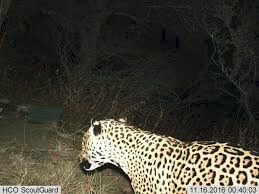
(New species of Jaguar, Arizona, 2017)
The article continues: “In the news release, Game and Fish also said the male jaguar photographed in the Huachuca Mountains in late 2016 was photographed there again in January of this year. A second male jaguar was photographed in the Whetstone Mountains in 2011 and repeatedly photographed in the Santa Rita Mountains from fall 2012 through fall 2015.”
You can see the new species appearing out of the ether in 2011, right around when the great positive changes I’m documenting here got underway in earnest.
If you don’t like my theory, I’d ask why the Illuminist talking-head writing the article why didn’t put forward one of their own, as to where these large, visually-striking animals suddenly came from, and why none like them have ever been documented.
In March 2017, Latest Stories said “ ‘Extinct’ Mountain Dogs Rediscovered in the Wild”
Where “EXTINCT MOUNTAIN dogs” is general. “The wild” is also general. The author has used hedging generalities to make the subject virtually unsearchable.

(New Guinea highland wild dog)
The subhead continues: “Unseen for more than 50 years, the New Guinea highland wild dog has at last been confirmed in its natural island habitat”.
Where “unseen” reinforces the false meme that it was there in it’s “natural” island habitat, all along, only no one had “seen” or “confirmed” it, previously, despite looking with great assiduousness for over half a century, and the fact that it is dog-sized.
The truth is that is “winked back into existence” from our perspective. The etheric environment New Guinea is back to where it was 50 years ago, and the life form can once again manifest within it.
You know how, in the Middle Ages, it was said “flies came directly from excrement?” That was basically correct, as we’re seeing here in this very long list of proofs. Can you see how the phenomenon is increasing, going forward in time?
Welcome to the collapse of the farce that is mean-spirited Western materialism.
In July 2017, AOL News reported “New species of sunfish discovered in New Zealand”.
Where “NEW species” is general. And a whole new species? Never encountered before?
The article continues: “A Japanese research group first found genetic evidence of an unknown sunfish species in Australian waters 10 years ago, but the fish kept eluding the scientific…”
Wait, what? Let’s go to the game films:
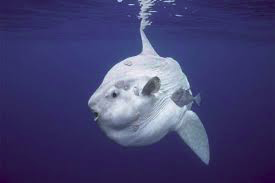
(Hoodwinker sunfish, New Zealand)
We can see that “genetic evidence” is Mil-Speak for gigantic, car-sized, humanoid sunfish, evidence of which they repressed for ten years, while pretending they were looking for said sunfish with the greatest assiduousness all the while.
The article continues: “A new species of sunfish has been discovered for the first time in 130 years after washing up on a New Zealand beach. The two-tonne creature has been named Hoodwinker sunfish (Mola tecta) because of its elusiveness. The new species managed to evade discovery for nearly three centuries by ‘hiding’ in a messy history of sunfish taxonomy, partially because they are so difficult to preserve and study, even for natural history museums," said Marianne Nyegaard from Murdoch University after publishing the finding. Nyegaard said it was during her research into unknown sunfish species that she eventually confirmed the existence of the Hoodwinker. The research author searched social media for evidence of one of the rumoured fish washing up on an Oceania shore until, in 2014, four sunfish washed up on a beach near Christchurch. Scientists have discovered a new species of gigantic ocean sunfish - that could weigh up to two tonnes - after it remained hidden for three centuries.”
Oh, wow, I see. The headline clearly states “discovered”, meaning “never seen previously”.
Yet this was seen, albeit 130 years previously. So the headline is a bald-faced lie. And only after multiple undeniable carcasses washed up did the scientific establishment have to admit that Mola tecta had, from our perspective, winked back into existence.
The headline reads “A new species of sunfish has been discovered for the first time in 130 years”, while the body text reads “after it remained hidden for three centuries”.
So there’s a hoodwinking taking place, and not on the part of the sunfish. Was it 130 years, or 300 years?
And we’re to believe a 4,000-pound sunfish moving at 2 miles per hour “eluded” those searching for it.
The assertion that they are difficult to preserve and study is general. Why, specifically?
The fact that its face is humanlike is bizarre, and unmentioned, and it will grace another chapter of this book, namely “human/animal hybrids”. But I digress.
The words “mystery”, “baffled” and “puzzled” are memes, used, among numerous similar variants, whenever anyone in the wholly-controlled-and-coopted Political, Academic, Scientific and Media establishments wants to lie about, well, basically anything. That’s why a BBC.com article from April 2017 is headlined “Cave fish found in ‘surprise discovery’ for first time in Europe”.
Where “CAVE” fish is general, as is “Europe”. The author omitted the creature’s actual name, and the name of the country where it was found, to make the subject far less searchable.
(Cave Loach)
The subhead reads: “Europe’s first cave-dwelling fish has been discovered in a surprise find by a diver in Germany after being hidden from human sight for millennia.”
Where “After being hidden from human sight” reinforces the false meme that the creature was there all the time, only no one had ever looked for it with enough assiduous previously.
The headline says “for first time”, while the body text walks it back to “for millennia”. Which is it? I’m so confused and ensheepled.
It’s exactly the same tactic used in the preceding example of the “Hoodwinker” sunfish, where 300 years was redacted to 130 years.
In June 2017, National Geographic said “ ‘Faceless’ Fish Seen for First Time in Over a Century”.
(Cusk Eel, Australia, 2017)
Where the headline uses the general “FACELESS” fish, and also omits the geographic location, both to make the subject virtually unsearchable.
The article continues: “Australian researchers found a strange-looking, “faceless” fish that appeared to not have any eyes, or even a face, during an expedition off Australia’s east coast. Though scientists initially thought the deep-sea creature might be a new species, further research revealed that the fish is a species of cusk eel (Typhlonus nasus) that has not been seen in Australian waters since the late 1800s.”
The author says that it had not been “seen”, which reinforces the bald-faced lie that the large and monstrous creature had been there all along, only no one had looked up for it with enough assiduousness, previously.
In July 2017, the Onion pretended to not be a State propaganda outlet by saying “Fish Species Not Seen Since 1960s Thinks It Can Waltz Back Into Marine Biologist’s Life Just Like That”.
Where the author has used the general “fish SPECIES” to obscure the name of the fish, to make the subject almost unsearchable. As a bonus, they also omit any mention of geography. Those are both careful and deliberate.
The author says that it had not been “seen”, which reinforces the bald-faced lie that the large and strikingly-marked creature had been there all along, only no one had looked up for it with enough assiduousness, previously.
The article continues: “Apparently thinking nothing of casually showing up in its ecosystem as if everything was hunky-dory, the blackfin cisco, a fish species not seen since the 1960s, reportedly thought it could waltz back into local marine biologist Margie Kremlow’s life on Wednesday just like that.”
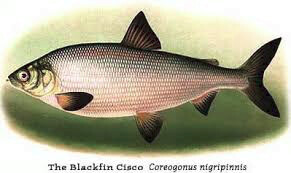
(Blackfin Cisco)
Where “as if everything was hunky-dory” is an ignorant, mouth-breather meme to replace “an environment booming and burgeoning to a level not seen in her lifetime”.
If you tell a lie big enough, and repeat it often enough, it becomes the Truth to those who accept and practice the programming.
The words “mystery”, “baffled” and “puzzled” are memes, used, among numerous similar variants, whenever anyone in the wholly-controlled-and-coopted Political, Academic, Scientific and Media establishments wants to lie about, well, basically anything. That’s why a National Geographic article from August 2017 is headlined “Mysterious Amazon Animal Seen Alive For First Time in 80 Years”.
The author has used the general “MYSTERIOUS animal” in the headline because they know that sixty to seventy percent of readers only read the headlines. This “comparmentalizes” the subject and makes it far less searchable.
The subhead continues: “The cowl-haired creature was first spotted in the 1930’s, but has eluded scientists ever since.”
Where the unnamed, cowl-haired “CREATURE” is said to have been “seen” and “spotted”, which reinforces the bald-faced lie that the dog-sized, bald-faced Saki was there in the trees all along, only no one had looked up for it with enough assiduousness, previously.
The article continues: “A rare monkey, the Vanzolini’s bald-faced saki, has been seen in the wild for the first time in over 80 years”.
Where we’ve gone from “in 80 years” in the headline to “over 80 years” in the body, which proves hedging by the author in the headline. And, yet another sick “SEEN” in the wild, to hammer home the false meme, a technique used in every single other example in this chapter.
(Vanzolini’s bald-faced Saki)
In September 2017, the Local said “Wild wolf cubs born in Rome for the first time in 100 years”.
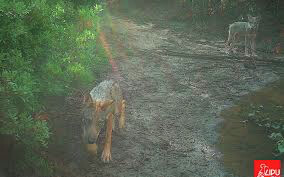
(Wild wolves, Rome, 2017)
The etheric environment in Rome is at a level of health where it hasn’t been in a century. Animals are smart enough to stay away when the Death energy level gets too high, and their return is a magnificent sign.
It’s one of just three accounts in the entire chapter to use the creature’s actual name.
In September 2017, gizmodo.com said “Jerk Humans Immediately Shoot First Wild Bison Seen in Germany for 250 years”.
Where “wild Bison seen in Germany” gymnastically generalizes back from the creature’s actual name: the European bison. The author did that to “compartmentalize” the phenomenon, and make it much less searchable. The propagandist knows that sixty to seventy percent of readers only read the headlines.
Where “seen” plays the false meme that the fish was in the creek for all history, only no one ever looked for it with enough assiduousness, previously.

(European bison)
Jerk “Humans” is a hedging generalization, is put forward to cover up the complicity of the one specific person who gave the order.
The article continues, promising “The World Wildlife Fund said on Friday it will be pursuing charges against a local official who, upon receiving a report of the first sighting of a wild bison in Germany in over 250 years, ordered the animal to be shot. After a person spotted the animal wandering alone in the forest near the east German town of Lebus, a local official panicked and worried that the animal could be dangerous, reports Christine Hauser for the New York Times. Officials were unable to track down a veterinarian to tranquilize the animal, and apparently resorted to employing the services of local hunters, Hauser reports.
Can you see how the “hit piece” obscures the identity of the literally-bison-blood-drinking Illuminist “Official” who ordered the shooting? If you think charges will be brought, there’s a bridge for sale here in Brooklyn that I think it might profit you to look at.
The article continues: “The people from the local city administration basically freaked out and said, ‘There is a free-roaming bison, it is probably dangerous and I guess we need to shoot it,’” Moritz Klose, a policy director for the German branch of the World Wildlife Fund, tells Hauser.
Moritz Klose is an Illuminist shill being quoted in a mainstream news article. He’s covering up for his fellow-conspirator who ordered the shooting. Here’s Moritz’s picture:

(Moritz Klose, “Policy Director”, World Wildlife Fund)
I’ve included it so that you could get a better idea of what a generational Satanist in a position of marginal influence looks like.
In September 2017, ohiodominican.edu said “Students Find Fish Never Before Seen in Alum Creek”.
Where, under the false guise of familiarity, they’ve omitted “Ohio”, and also replaced the creature’s actual name with the general “fish”. Those are both careful, deliberate tactics.
“SEEN” in Alum Creek plays the false meme that the neon-bright fish was in the creek for all history, only no one ever looked for it with enough assiduousness, previously.
Now, let’s take a look at the Tippecanoe Darter, and you tell me if you think everybody just missed it up until now:
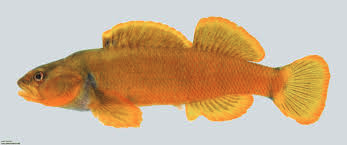
(Tippecanoe Darter)
The article continues: “An Ohio Dominican University Ichthyology class has found a species of fish in Alum Creek for the first time in history.”
Where, with the clock ticking on the short-attention-span reader, the propagandist has hedged for another line, with the general “SPECIES of fish”.
“One of Ohio’s two smallest species of fish, Tippecanoe Darters are listed as a state-threatened species, which the Ohio Department of Natural Resources defines as being “a species or subspecies whose survival in Ohio is not in immediate jeopardy, but to which a threat exists. Continued or increased stress will result in its becoming endangered.”
No mention is made of a rapidly-increasing frequency of new species discoveries, or of the rediscovery of supposedly extinct species in 2017.
In November 2017, ScienceDaily said “First wild alligator snapping turtle in Illinois since 1984”.
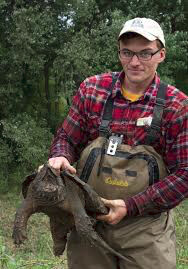
(Alligator snapping turtle, Illinois)
Alligator snapping turtles are booming and burgeoning in Illinois to a level not seen in my lifetime.
Clearly there’s been some major positive change in the environment of the alligator snapping turtle in Illinois.
It’s one of only three accounts in this chapter which actually states the creature’s name.
In November 2017, knoxnews.com said “TVA biologist, Yale professor find new fish found only in Tennessee”.
The author has used the general “new FISH” to obscure the actual name, to make the subject far less searchable.
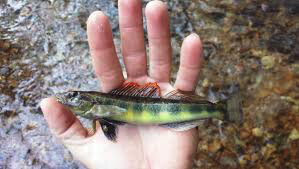
(Tennessee Logperch Darter)
The article continues: “Behold the Tennessee Logperch. The fish, a darter, can grow to be 6 inches long. It has flattened little splotches on its flanks. That the splotches are flattened is important; those are what first led TVA aquatic biologist Jeff Simmons and Yale professor Tom Near to suspect they had discovered a new fish. In the case of the Tennessee Logperch, Simmons found the fish while he was studying a closely related species, the Blotchside Logperch. Back in 2013, Simmons spotted a Blotchside Logperch, itself a rare darter, in East Tennessee. “I was in the Big South Fork doing some research on mussels when I saw a Blotchside,” he said. “It was a big deal since the fish had not been seen there since 1890.”
He’s used “spotted” and “seen” to reinforce the false “seen” meme, that the colorful fish was there, all along, only no one looked for it with the required assiduousness for, geez, over a hundred years.
In December 2017, insituscience said “Lost species of bee-mimicking moth rediscovered after 130 years in Malaysian rainforest”.
Where “rediscovered” reinforces the false meme that the gigantic moth was there, all along, only no one looked for it with the required assiduousness for a very long while.
Where the author has used the general “Lost SPECIES” to obscure the actual name, to make the subject far less searchable.
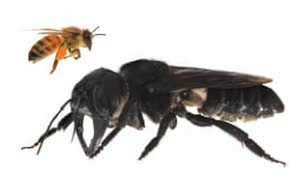
(Oriental Blue Clearwing Moth)
The article continues: “The rare oriental blue clearwing, that disguises itself as a bee, was spotted in the Malaysian rainforest.
Where “spotted” reinforces the false meme that the guinea pig-sized bee-moth was there, all along, only no one looked for it with the required assiduousness for a very long while.
As an aside, I’d note here that the great size of “the dinosaurs” was not due to the ludicrous “higher oxygen content of the atmosphere”, or “Darwinism”, as falsely alleged, but rather because the healthier etheric environment supported larger examples of the lifeforms. Ergo:
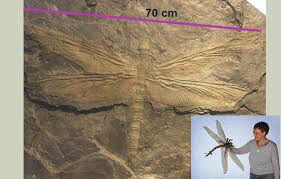
(Meganeuropsis permiana)
Coincidence Theorists wishing to test out of this section of this course must submit an essay documenting how or why gigantic size was crucial to the evolution of the species (a la Darwin) in the past, but is no longer crucial for dragonflies at this time. The use of “higher oxygen levels in those days” is not acceptable, as putting generations of dragonflies in a higher-oxygen environment does not increase their size by orders of magnitude, or by any magnitude whatsoever.
In February 2019, dw.com said “Frog species believed extinct reappears in Ecuador”.
Where “reappears” reinforces the false meme that the dog-sized quadruped was there, all along, only no one looked for it with the required assiduousness for a very long while.
And where the author has used the general “frog SPECIES” to obscure the actual name, to make the subject far less searchable.
The article continues: “Scientists have rediscovered the marsupial horned frog – last seen over a decade ago and considered extinct. A colony of the amphibians was found during a recent expedition into an endangered rainforest in western Ecuador.”

(Marsupial Horned Frog)
In March 2019, the Hindu said “Wood snake, last seen in 1878, rediscovered by scientists”.
Where “rediscovered” reinforces the false meme that the stunningly bizarre frog was there, all along, only no one looked for it with the required assiduousness for a very long while.
And where the author has used the general “Wood snake” to obscure the actual name, to make the subject far less searchable.
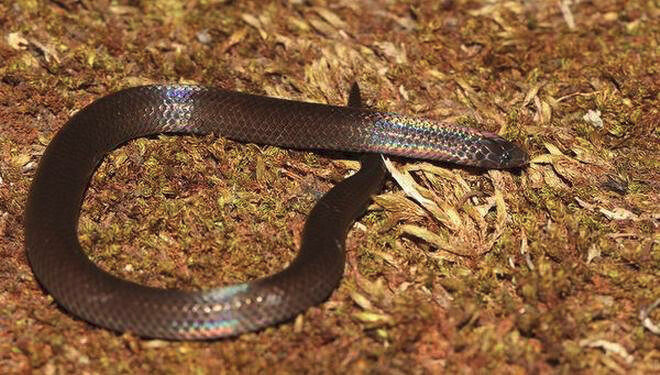
(Point Endemic Brown Snake)
“The snake is a ‘point endemic’ (found only in Meghamalai). It was found in the same region that Colonel Beddome alluded to, and the morphological characters match with his specimen,” said Dr. Chaitanya, who found a female specimen. The snake he discovered was 235 mm long and uniformly dark brown.”
In April 2019, National Geographic said “Hawaiian flower, thought extinct, was rediscovered by a drone”.
Where “rediscovered” reinforces the false meme that the huge, stunning flower was there, all along, only no one looked for it with the required assiduousness for a very long while.
And where the author has used the general “Hawaiian FLOWER” to obscure the actual name, to make the subject far less searchable.
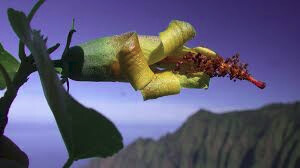
(Hibiscadelphus wood Hibiscus)
The words “mystery”, “baffled” and “puzzled” are memes, used, among numerous similar variants, whenever anyone in the wholly-controlled-and-coopted Political, Academic, Scientific and Media establishments wants to lie about, well, basically anything. One of those variants is “startled”. That’s why the article goes on to say: “In late January, a drone flight made a startling discovery: Hibiscadelphus woodii, a relative of hibiscus last seen in 2009 and believed to be extinct, was still growing on the cliffside. The species was first discovered in 1991, named in 1995, and deemed extinct in 2016A legendary Ozark chestnut tree, thought extinct, was rediscovered in 2019.”
In February 2019, Audubon said “Confirmed: Two Endangered Seabirds Have Been Rediscovered on Oahu”
Where “rediscovered” reinforces the false meme that the large, highly-mobile seabirds were there, all along, only no one looked for it with the required assiduousness for a very long while.
And where the author has used the general “TWO endangered SEABIRDS” to obscure the actual name, to make the subject far less searchable.

(Hawaiian Petrel)
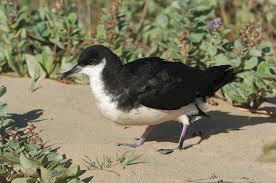
(Newell’s Shearwater)
The article continues: “Thought to be extinct on the Hawaiian Island for centuries, Newell’s Shearwaters and Hawaiian Petrels were found using acoustic monitoring.”
“They were so hard to see, we had to use special equipment to listen for them!”, goes the ruse. Look at the damn things. They’re the size of guinea pigs, and they fly around. They’re not vermin, nesting in holes in the ground. Which of course would still be found by honest, non generational-Satanist naturalists.
A “Global News” article from April 2020 is headlined “Jellyfish ‘spotted’ in Venice canal as coronavirus clear-up continues”.
Where “spotted” reinforces the false meme that the jellyfish were there in Venice’s canals all along, only no one looked for them with the required assiduousness for a very long while.


(Jellyfish in Venice Canal, 2020)
The words “mystery”, “baffled” and “puzzled” are memes, used, among numerous similar variants, whenever anyone in the wholly-controlled-and-coopted Political, Academic, Scientific and Media establishments wants to lie about, well, basically anything. One of those variants is “startling”.
That’s why the article goes on to say “A biologist in Italy recorded startling footage earlier this month of a near-transparent jellyfish swimming in the crystal-clear waters of the Venice canals as the city’s waterways continued to clear up amid the ongoing coronavirus lockdown.”
The “virus did it” meme continues: “Venice officials say the city’s canals have cleared up over the last month because boat traffic is no longer ‘stirring up sediment’ in the water. In other words, nature hasn’t ‘exactly’ “healed” from the pollution caused by humans, but it’s enjoying a ‘little’ break right ‘now’.
The “pollution” that the Covid is alleged to have alleviated is general. Not “exactly” healed is the Big Lie, told by a Trusted Authority Figure with the firmness of purpose that goes with complete honesty. An environment that is booming and burgeoning to an historically unprecedented level is flatly maintained to be “not ‘exactly’ healed”. The author hedges again that it’s only a “little” break, and that the little break is only taking place right now, and will stop in the future.
And there’s curiously no mention of the sudden reappearance of the Drymonema dalmatinum jellyfish in Italy in 2014, after not being documented for over seventy years.
I’m guessing that the “new” species that are “appearing” are, in fact reappearing, in that “there’s nothing new under the Sun”.
A recent insurance motorcycle commercial features Centaurs.
If my thesis is correct, we’re going to continue to see the reemergence of ancient life forms, I guess Centaurs among them.
The “big secret” as to why research of “Bigfoot” or “Sasquatch” is forbidden is the marked Interdimensional abilities of the creature, and I guess so is the same with “lake monsters”.
This chapter is bringing into clearer light a great confidence game worked upon humanity for hundreds of years.
The words “mystery”, “baffled” and “puzzled” are memes, used, among numerous similar variants, whenever anyone in the wholly-controlled-and-coopted Political, Academic, Scientific and Media establishments wants to lie about, well, basically anything. Two of those variants are “hunch” and “hoax”.
That’s why Wikipedia says “When the platypus was first encountered by Europeans in 1798, a pelt and sketch were sent back to Great Britain by Captain John Hunter, the second Governor of New South Wales. British scientists’ initial hunch was that the attributes were a hoax.”
Wikipedia continues: “Together with the four species of echidna, it is one of the five extant species of monotremes, the only mammals that lay eggs instead of giving birth to live young. Like other monotremes, it senses prey through electrolocation. It is one of the few species of venomous mammals, as the male platypus has a spur on the hind foot that delivers a venom capable of causing severe pain to humans.”
Essay: Provide a detailed, mechanistic explanation as to what creatures the Duck-billed Platypus evolved over what period of time. Then explain why and how “the survival of the fittest” and Evolution as described by Charles Darwin led it to be the only mammal on Earth that lays eggs.
The words “mystery”, “baffled” and “puzzled” are memes, used, among numerous similar variants, whenever anyone in the wholly-controlled-and-coopted Political, Academic, Scientific and Media establishments wants to lie about, well, basically anything. One of those variants is “unusual”. That’s why Wikipedia goes on to say:
“The unusual appearance of this egg-laying, duck-billed, beaver-tailed, otter-footed mammal baffled European naturalists when they first encountered it, and the first scientists to examine a preserved platypus body (in 1799) judged it a fake, made of several animals sewn together.”
Wait, what? Unusual “appearance”? That hedges it violently back down to what it looks like, versus the truth, it doesn’t have fur that resembles a duck’s bill, it has an actual duck bill.
As is always the case with propaganda, once you know what to look for, it actually helps guide you to the obscured truth as to what’s going on.
Jeff Miller, Brooklyn, New York, December 11, 2020
If you’d like to be added to this free mailing list, or know someone who would be, please send me a note at [email protected]
You can access these articles online at https://forum.orgones.co.uk/c/positive-changes-that-are-occurring/

